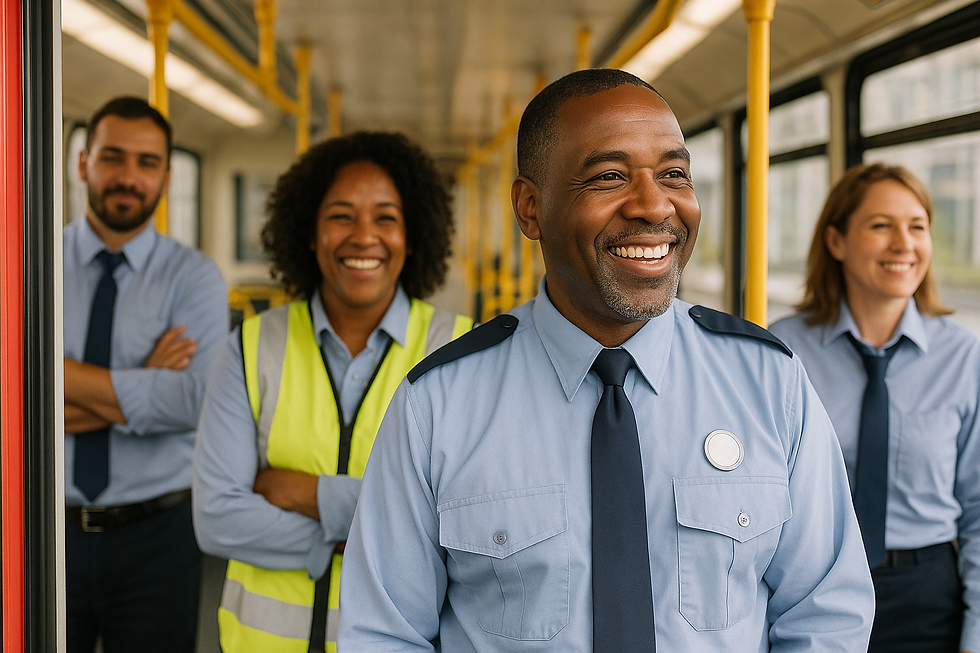Is Free Public Transit The Right Idea?
- The Friendly Urbanist

- Jul 22
- 3 min read

At first glance, free public transit seems like the ultimate urbanist dream. A car-free future. Streets reclaimed for people. No more fumbling for change or tapping a card. Just hop on and go. It’s universal, it’s clean, and it’s good for the planet.
But here’s the thing: free doesn’t always mean fair. And for those of us who approach urbanism from a social justice lens, who care deeply about class, equity, and the role of public services in redistributing power, we need to look a little deeper.
Who Pays For Free Public Transit?
Nothing is ever truly “free". Free transit systems still need funding, for drivers, mechanics, maintenance, new buses, expansions, and more. The question becomes: who foots the bill?
Many proposals rely on general taxation like a city-wide sales tax or an increase in license and registration fees. Those are often regressive, disproportionately impacting lower-income households who already carry the weight of unaffordable housing, inflation, and precarious work.
A social tariff, on the other hand, can be funded progressively. Higher-income residents and corporations contribute more. Transit remains free (or heavily subsidized) for those who need it most. It’s targeted, just, and more fiscally sustainable.
What Gets Cut?
In practice, many cities that scrap fares struggle to maintain service quality — not because free transit is a bad idea in principle, but because it's often implemented without sufficient new funding to replace farebox revenue. When that revenue disappears and budgets aren’t topped up accordingly, agencies are forced to make hard choices. The result? Reduced routes, longer wait times, deferred maintenance, hiring freezes, and aging infrastructure that can’t keep up with rising demand.

Take Tallinn, Estonia, one of the first European capitals to implement fare-free transit in 2013. While the policy was celebrated, studies found it did little to shift people out of cars and was funded largely through municipal budgets, raising questions about long-term financial sustainability and investment in service improvements. In Kansas City, the first major U.S. city to commit to free public transit in 2019, service frequency and reliability remained persistent challenges — especially as federal pandemic relief funds that temporarily masked operational shortfalls began to run dry.
Even Luxembourg, the first country to make all transit free nationwide, has faced criticism from transport unions and policy experts who argue that free fares alone have not expanded service coverage, reduced congestion, or addressed spatial inequality — particularly for low-income residents in rural areas who remain car-dependent due to sparse transit networks.
In short, a free bus that comes once an hour isn’t a win for transit justice. Without a solid fiscal plan, fare abolition risks becoming a hollow gesture: good optics, poor service.
Social tariffs allow cities to retain some fare revenue while still supporting vulnerable riders. That can mean better investment in underserved areas and more resilience in funding.
What About Workers?

Let’s not forget the people who make transit systems run. When we eliminate fares, we often eliminate fare-related jobs; ticket agents, customer service staff, fare inspectors. Without planning, those workers pay the price.
A socially just transit policy must include job guarantees, retraining programs, and active involvement of transit unions. Social tariffs reduce disruption and allow for a more balanced transition that respects the labour behind the wheels.
Free Public Transit for the Wealthy?
Here’s a blunt truth: Elon Musk doesn’t need free transit. Blanket fare elimination gives the same benefit to both minimum wage workers and high earners. That’s not targeted redistribution, it’s a regressive subsidy.
A social tariff ensures that those struggling the most - low income students, seniors, the unemployed, the underpaid - ride for free or almost free, while asking those who can afford to pay a little more to do their part. That’s not gatekeeping. That’s solidarity.

Public transit is a public good. But not all funding models are created equal. A truly just city doesn’t treat everyone the same, it responds to different needs in different ways. Universal access is the goal, but universal fare elimination isn't always the best tool.
We should focus on building systems rooted in equity, with stable funding, broad service coverage, and respect for transit workers. And let’s consider social tariffs, not as a compromise, but as a smarter, fairer way to fund the transit future we all deserve.








Comments